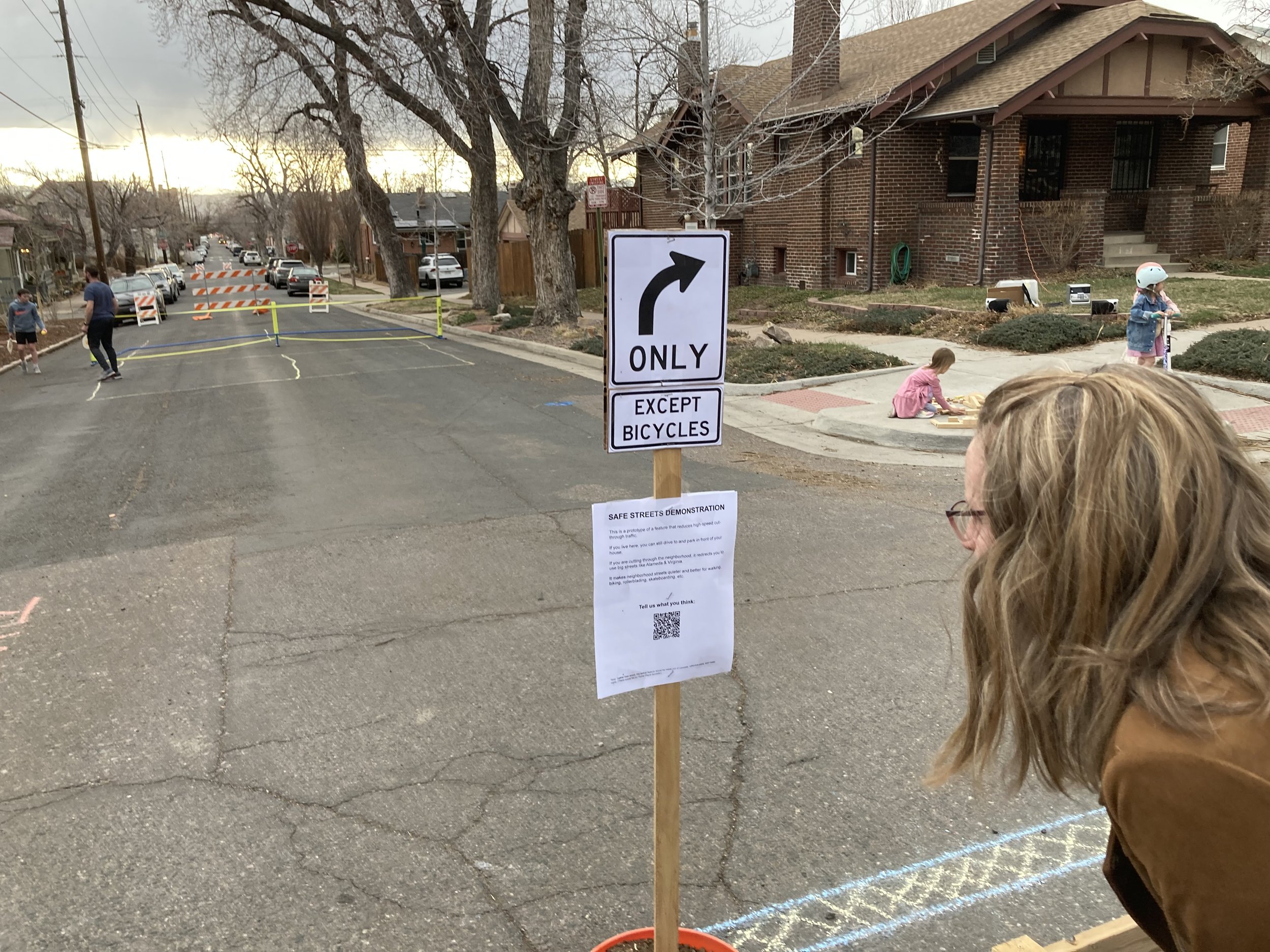VAMOS in the Real World
This past week, VAMOS hit a major milestone: our first demonstration project in the real world. We prototyped a feature that will reduce neighborhood cut-through traffic and make VAMOS streets quieter for neighbors and delightful for rolling.
And, like a nice, warm hug, it was all surrounded by a block party with lots of neighbors, friends, and volunteers.
This was our first crack at Phase I of the VAMOS implementation plan.
We've been wanting to do a block party for a while to celebrate streets as a place for people. But rather than using the normal geometry -- a single block closed at both ends -- we decided to do an intersection.
We rented a truck, picked up a bunch of barricades, and placed them according to our traffic control plan.
In the streets, we had food, seating, pickleball, ping pong, a foosball table, mega Jenga, bags, and blocks. (Yes, blocks at a block party.)
And in the middle of the intersection, we created the atomic unit of VAMOS: a median traffic diverter that reduces cut-through traffic on neighborhood streets.
Rollers pass through. Drivers turn right. And the street becomes less desirable as a high-speed cut-through route.
Why do this? There are some diverters around Denver, but there's a scale problem: they cost a huge amount of money, require custom engineering, and the City has to tear up the streets to install them.
The result is that it's difficult to build enough of them to make an impact on a full corridor. On the 35th Ave. Neighborhood Bikeway, there's one excellent diverter. But realistically, to make this whole corridor comfortable for people of all ages, abilities, and backgrounds -- a VAMOS requirement -- we need about 10 of them.
That's why for VAMOS, we've created a template that allows us to create diverters at scale, genuinely reduce cut-through traffic, and make full corridors delightful for neighbors and rollers.
Eventually, these features will be built out of pre-cast concrete and metal. And we'll be able to build them in few hours for a few thousand dollars. It could be a game changer.
We asked neighbors for feedback on the prototype and their response was overwhelmingly positive. Seriously, who wants high-speed cut-through traffic, especially when there's an arterial street one street over?
The limitation on this demonstration was that it was in a controlled, closed-street environment. Next, we're asking DOTI to work with us on a demonstration with the streets open. More to come soon, we hope.













